As Yellowstone’s supervolcano slumbers, another big danger lurks
Superheated underground water there can explode with the force of an atomic bomb
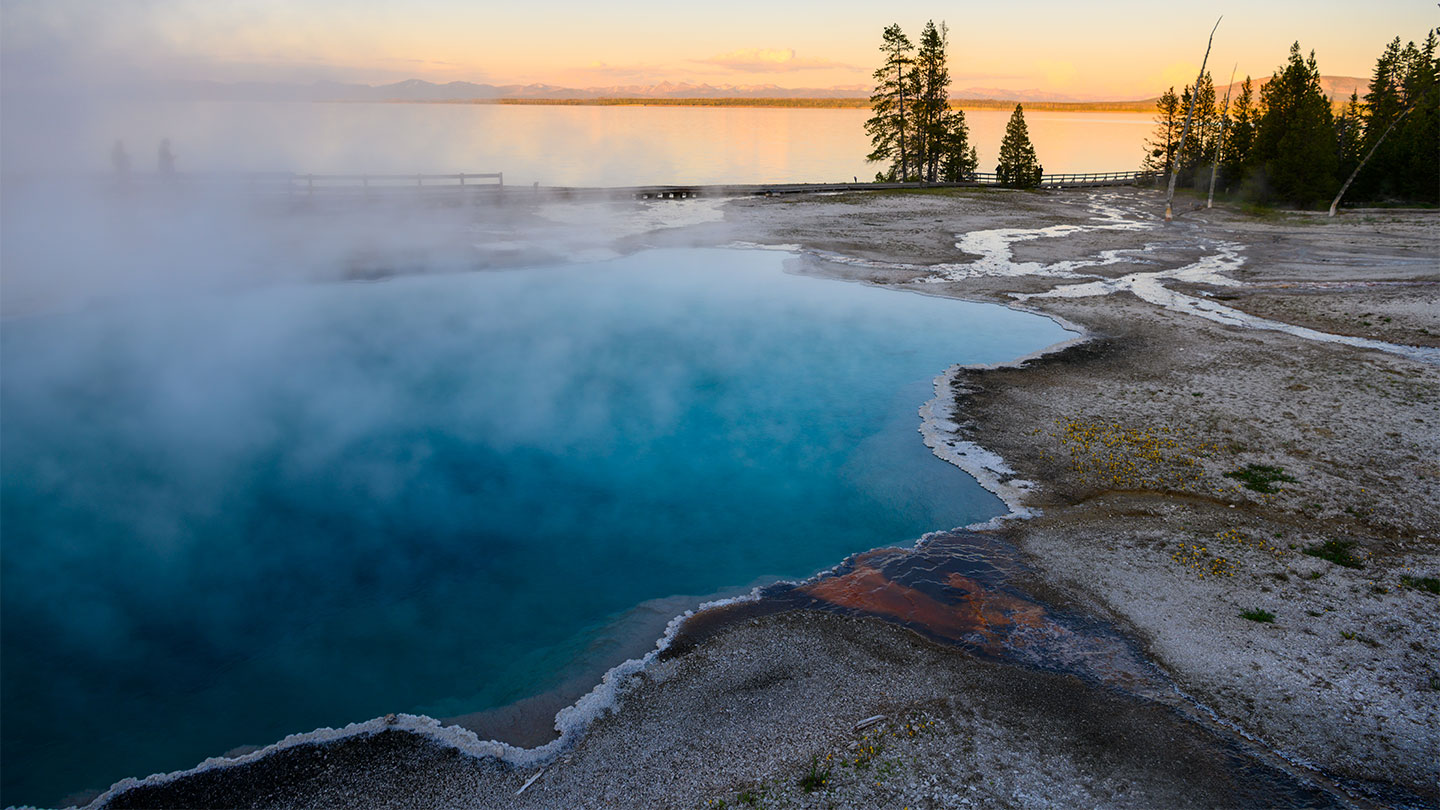
The area around West Thumb Geyser Basin and Yellowstone Lake has been rocked in the past by many hydrothermal explosions. They’re powered by the same heat from underground magma that feeds the park’s famous hot springs and geysers.
Siraphob Tatiyarat/Moment/Getty Images
Yellowstone National Park is known for its bubbling hot springs and steaming geysers. These hydrothermal wonders are powered by a massive cauldron of partly melted rock deep underground. It holds enough seething magma to build several Mount Everests.
Yellowstone’s volcano last erupted 70,000 years ago. If it did so again, it could bury a vast area under lava.
Most scientists consider this unlikely, at least for the next several thousand years. But another serious hazard lurks — one more sudden and treacherous than lava. To understand its destructive power, it helps to know what happened a decade ago at Japan’s Mount Ontake.
September 27, 2014, was a sunny day with a gentle wind. At 11:52 a.m., more than 100 hikers stood atop the mountain, snacking and taking photos.
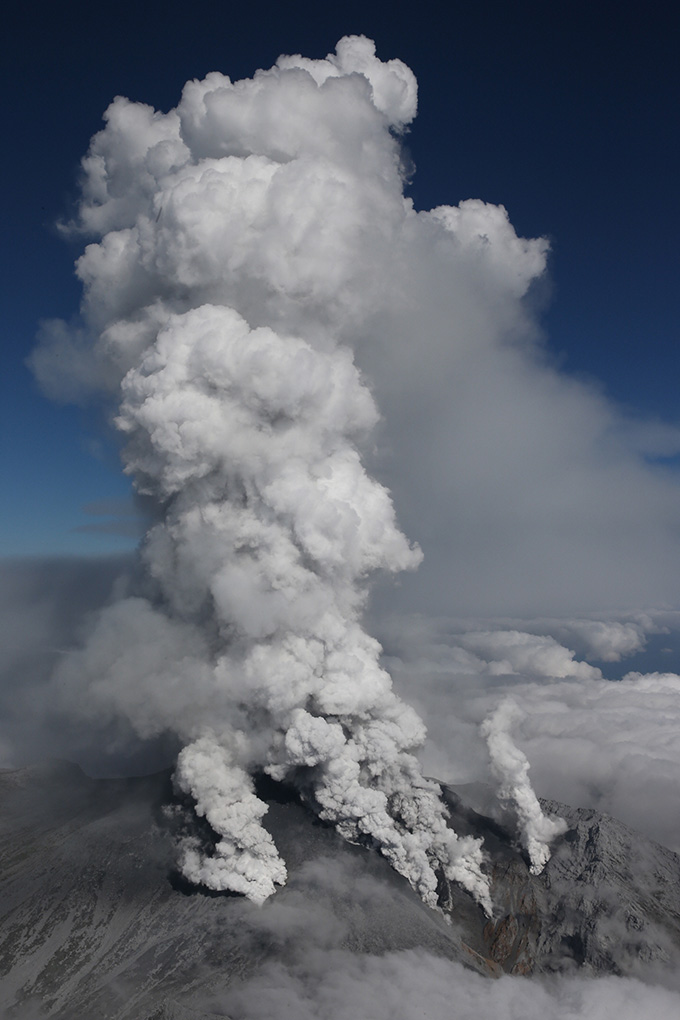
Then trouble struck. And it came with little warning.
Windows in a nearby hut suddenly shook. They were rattled by a powerful shock wave, one too low-pitched for human ears to hear.
Then a massive gray cloud billowed up from the mountain’s southwestern slope.
It swept over the summit, blinding people in swirling dust. They couldn’t see as a million tons of rock and dust, blasted from the mountain, rained down on them. Sixty-three people died. Most were killed by falling debris.
But this volcano’s sudden explosion was not driven by lava or fire. It had been powered by water.
A pool of underground water heated suddenly, likely by volcanic gases or magma rising up from below. The water boiled to steam almost instantly. As this happened, it expanded to hundreds of times its original volume. This shattered the mountain’s slope, shooting rocks into the air.
This kind of steam blast is called a phreatic (Free-AAH-tick) explosion. It’s triggered by a sudden pulse of heat within an active volcano. But similar steam explosions, called hydrothermal explosions, also can erupt far from active volcanoes.
Yellowstone is pockmarked with craters left by these explosions. There have likely been thousands over the past 14,000 years. These include one terrifying blast this past July 23; it tossed out rocks and sent tourists fleeing.
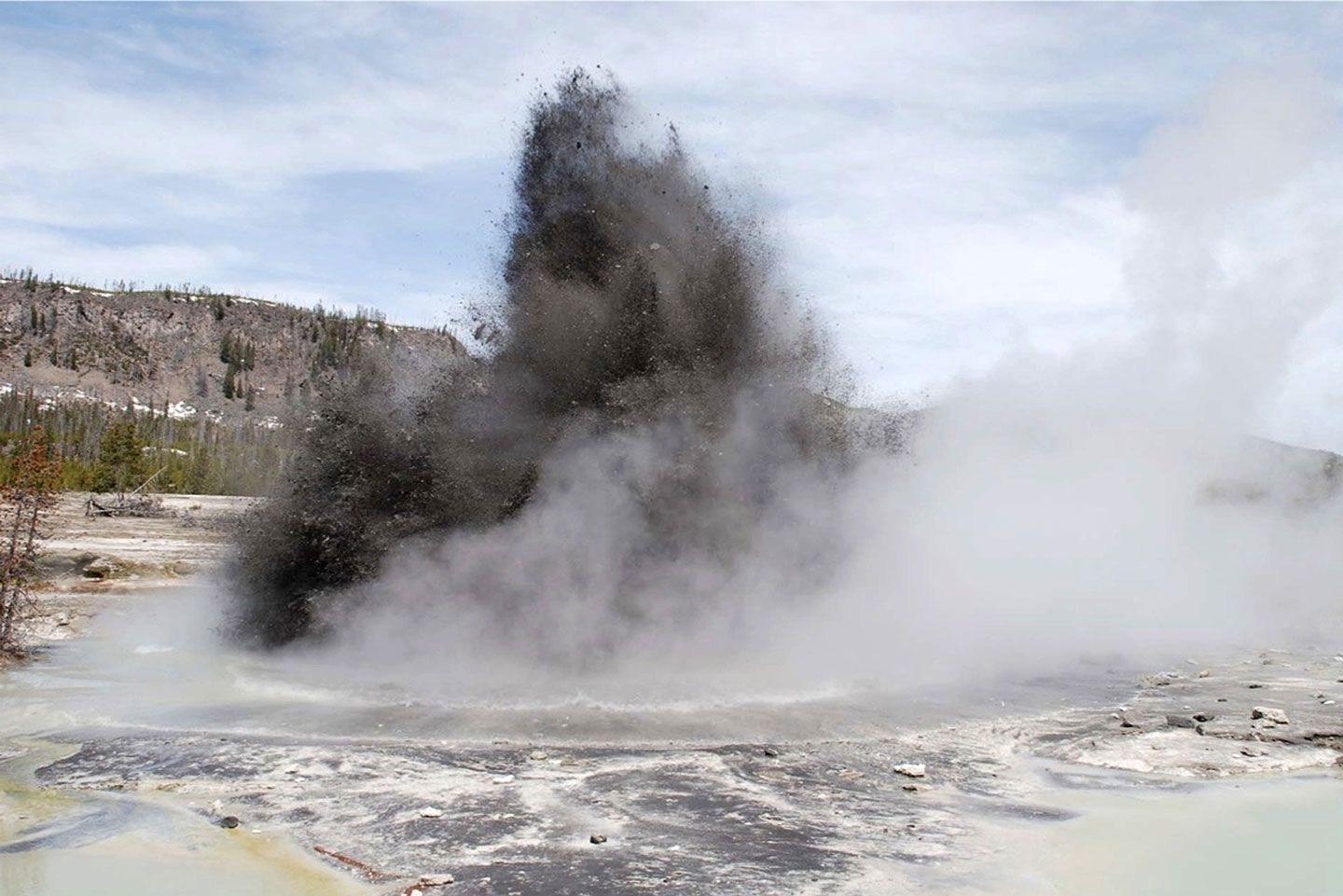
In the past century, there’ve been “only small ones,” says Paul Bedrosian. He’s a geophysicist with the U.S. Geologic Survey (USGS) in Lakewood, Colo. “But we know [Yellowstone] is capable of creating whoppers,” he says — ones much bigger even than Ontake’s.
To learn what triggers them, researchers have explored the depths of Yellowstone Lake (on the park’s east side). Hundreds of hot-water vents dot the lake’s floor. That floor also hosts some of the world’s largest hydrothermal-explosion craters. And rising from the lake bottom are hard, brittle domes that might one day explode.
“Hydrothermal explosions are very, very dangerous,” says Lisa Morgan. She’s a volcanologist with the USGS in Denver, Colo. For 25 years, she’s studied Yellowstone’s biggest explosions.
And another, she says, “could very well happen today.”
A marshy disaster
Scientists have studied Yellowstone’s hot springs and geysers since the late 1800s. But it wasn’t until 1966 that they realized it had been the site of violent steam explosions.
That summer, Patrick Muffler made his first visit to Pocket Basin. It’s near the western edge of Yellowstone. He was a young scientist with USGS. He traveled with his boss, Donald White, a USGS scientist who studied hot springs and geysers.
Pocket Basin is a broad, bowl-shaped meadow. A rocky ridge surrounds it on three sides. Hydrothermal pools and springs are scattered across the meadow. They scent the air with the sour smell of hydrochloric acid. That acid constantly seeps out of hot water burbling up from below.
As the two scientists explored this area, White recognized something he had seen before. Back in 1951, he had visited Lake City, Calif., to check out something strange.
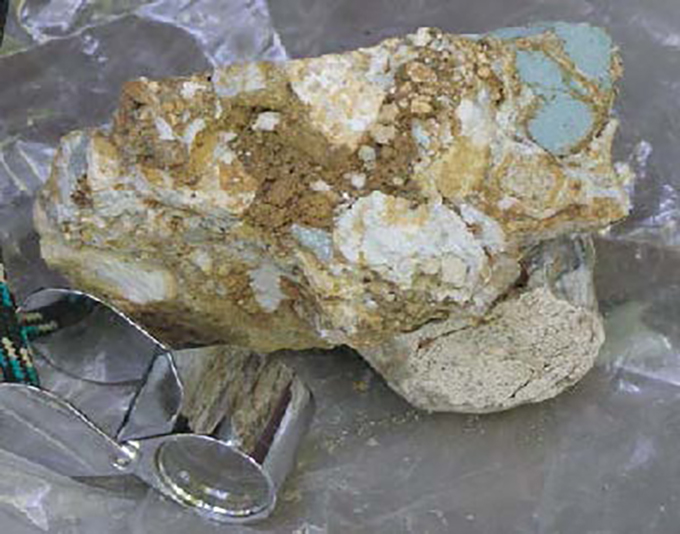
Five nights earlier, a once-peaceful group of hot springs in a marshy meadow had exploded. That blast flung 300,000 tons of mud and rock onto nearby fields. The rocks were made of gravel and sand. These had been cemented together with minerals — whitish zeolite and opal.
White knew that these materials form when hot water full of dissolved minerals comes close to the surface. As the rising water cools, the dissolved minerals crystalize into solids, forming these rocks.
Underground water had suddenly flashed into steam, White concluded. Its instant expansion had flung out those rocks.
As White and Muffler walked up the ridge surrounding Pocket Basin, their boots crunched over similar stuff. This meadow, White realized, was the crater left by a hydrothermal explosion. It spanned an area the size of 10 football fields! And that surrounding ridge? It was made of rocks blasted out by the explosion.
Yellowstone’s water under pressure
Water that fuels such explosions starts as snow and rain. That moisture trickles underground through cracks. Eventually, several kilometers below Yellowstone, it nears the magma chamber.
Here, the water becomes heated to more than 250º Celsius (482º Fahrenheit). That’s way hotter than water’s normal boiling point, 100 °C (212 °F). This water stays liquid because the immense pressure underground keeps it from expanding into steam.
This superheated water can spurt back up through cracks in the bedrock. Mostly, the rock is strong enough to withstand the hot water’s pressure. Near the surface, it feeds Yellowstone’s hot springs and geysers.
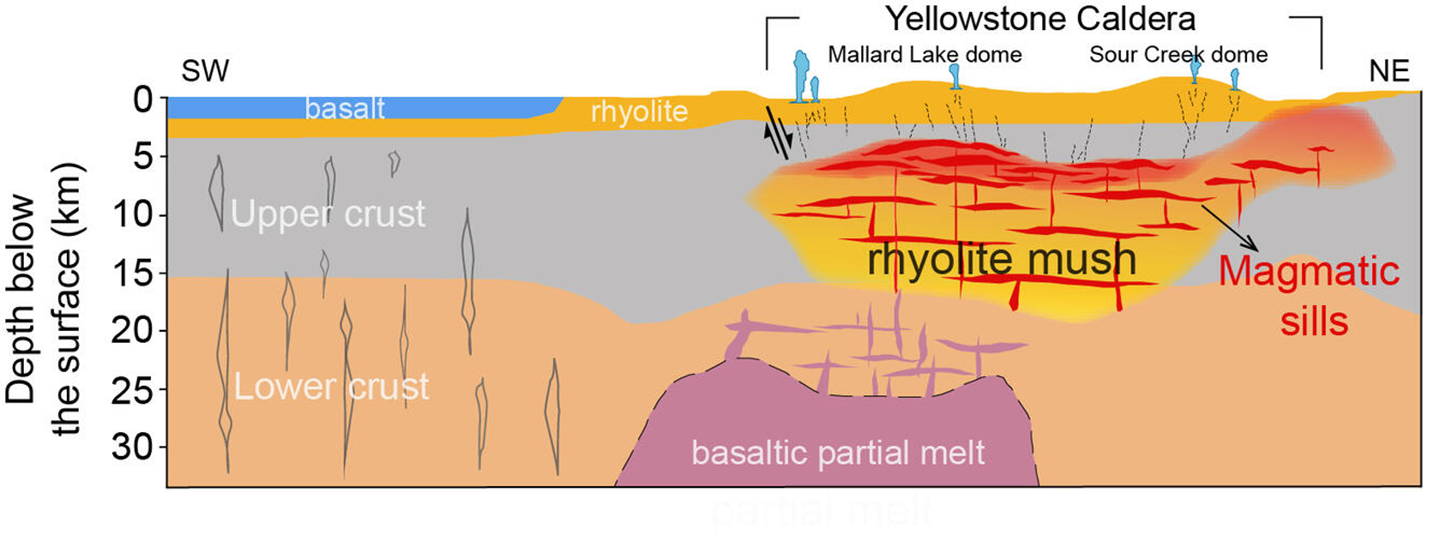
But sometimes the water’s pressure suddenly exceeds the rocks’ strength. This can happen when the water quickly gets much hotter, boosting its pressure. That causes a steam explosion, as happened at Mount Ontake.
But something different triggered the explosion at Pocket Basin, White and Muffler believed. The underground water didn’t get hotter. Instead, the rocks weakened due to some sudden change at the surface.
Pocket Basin likely exploded at the end of the Ice Age, some 13,500 years ago. A lake would have covered the region back then, held in place by a dam of ice. But at some point the ice melted. This broke the dam, allowing the lake to spill out.
“If you can get rid of that [lake] water instantly,” says Muffler, “that depressurizes the system — and bang, it goes off.” With less weight above it, the hot water below explodes into steam.
Muffler and White found nine more large hydrothermal-explosion craters scattered across Yellowstone. They published their results in 1971. Several years later, scientists found Mary Bay crater, in the north end of Yellowstone Lake. At 2.6 kilometers (1.6 miles) across, it is still the largest hydrothermal-explosion crater known on Earth.
Morgan has studied what may have caused some of these big explosions. What she’s found suggests they could happen again — at any time.
Hidden hot zone
Starting in September 1999, Morgan teamed up with Pat Shanks to explore the northern part of Yellowstone Lake, near Mary Bay. Shanks is a geochemist with USGS.
Workers spent days zigzagging across the lake in a boat. Using sonar, they mapped the lake’s bumpy floor. And they used seismic sensing to show the layers of mud and rock underlying the lakebed.
Each evening, Morgan and Shanks watched as new maps of the lake floor printed out. It “was an incredible eye-opener,” says Shanks.
These maps uncovered a huge crater southwest of Mary Bay. Called Elliott’s crater, it is 830 meters (more than half a mile) across. That makes it the third-largest hydrothermal-explosion crater on Earth.
The team released a remotely operated vehicle into the lake to explore this newfound crater. People crowded around computer screens to watch the live video feed.
Inner walls of the crater loomed steeply in the murky water. Foot-long sucker fish hovered above. They were “lined up like airplanes,” Morgan recalls. Why? “They love the hot water.”
Dangerous pressure cooker
This mapping also turned up many smaller explosion craters on the lake floor along with more than 250 hot-water vents. “We found it to be a far more hydrothermally and tectonically active lake than anyone had ever expected,” says Morgan.
Here and there, rounded domes rise above the lake’s floor. These mark where hot water seeps out. Minerals from that water slowly cement sand and mud into a crust. Eventually, hot water can get trapped beneath that crust. That’s when a bulge forms.
As this continues, “you’re going to have a pressure cooker,” says Bedrosian of USGS.
Morgan believes that Elliott’s crater formed when one of these pressure cookers exploded. Other lake-floor domes could also explode one day.
Many are smaller than an umbrella. But the North Basin Hydrothermal Dome is 750 meters (nearly a half mile) across. It currently rises a full seven stories above the lake floor!
Hot water still burbles out through its crust. “But over time that’s going to change,” says Morgan. “Those open spaces will seal.” Once that happens, “it’s a perfect candidate for a potential hydrothermal explosion.”
Little catastrophes
The history of Yellowstone Lake might help reveal what set off big explosions in the past — and when. So in 2016, Morgan and Shanks led a team of workers who extracted eight cores of sediment from the muddy lake floor.
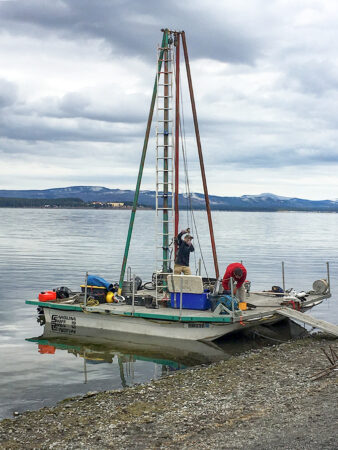
Interspersed in the dark mud were layers of whitish gravel. That gravel was debris from hydrothermal explosions. Those layers revealed the lake’s violent past.
Morgan and Shanks shared what they learned in the GSA Bulletin in 2022. They had turned up explosion layers from Mary Bay and Elliott’s craters. They also found evidence of up to 14 smaller previously unknown blasts. The most recent happened around 165 years ago.
In contrast, Elliott’s crater exploded about 8,000 years ago, they found. Morgan believes a major earthquake around that time had triggered it. The ground movements may have cracked the dome, releasing the pressure inside it. That would have let hot water trapped there explode into steam.
Mary Bay exploded around 13,000 years ago, the cores showed. Morgan thinks an earthquake also triggered this blast — but indirectly.
She and her colleagues found geologic evidence that the quake triggered a massive wave, called a lake tsunami. The wave may have broken through a natural dam of rocks and dirt on the lake’s north end. That would have allowed much of the lake’s water to drain out.
In fact, “The lake dropped suddenly 14 meters [46 feet],” she says. “That’s huge!”
As downward pressure on the lake floor decreased, superheated water below would have expanded into steam. The resulting blast created the largest hydrothermal crater on Earth.
Earthquakes and tsunamis can occur without warning, Morgan points out. There’s no reason they couldn’t trigger a giant explosion at Yellowstone today.
Do you have a science question? We can help!
Submit your question here, and we might answer it an upcoming issue of Science News Explores
Atomic boom
A Yellowstone explosion today could be far worse than the 2014 blast at Mount Ontake. Morgan estimates that the Mary Bay explosion ejected a quarter of a cubic kilometer (0.06 cubic mile) of sediment and rock out of its crater. That’s 15 times as much material as was used to build Egypt’s Great Pyramid of Giza. It is 100 to 400 times the volume ejected by Mount Ontake in 2014.
Even more alarming is how it compares to an atom bomb.
In 1962, the U.S. conducted the Storax Sedan nuclear test. This 104-kiloton underground bomb blasted five million cubic meters of rock and sand out of the Nevada desert floor. But the explosion at Mary Bay spewed 50 times that much material!
The Mary Bay blast tossed refrigerator-sized boulders out of the lake. A wave of boiling mud surged onto the lake shore. It left a pile that is four to eight stories tall in some places.
This sounds scary. But it’s no reason to stay away from Yellowstone. After all, most people don’t avoid visiting Los Angeles just because they are worried about earthquakes. The chances that a massive quake or hydrothermal explosion will happen on any given day are quite low.
Still, it would be useful to predict when big hydrothermal explosions might occur.
Today, no one knows how. But Lauren Harrison has discovered that the risk might change over time. She’s a geologist at Colorado State University in Fort Collins. And she’s studied how rain and snowfall levels have affected Yellowstone’s hot springs and geysers over thousands of years.
She’s looked at how the layers of minerals that form as hot water reaches the surface have changed over time in Yellowstone National Park. Water temps below ground were lower 13,900 to 13,600 years ago, she’s found. They dipped once more 12,200 to 9,500 years ago, and again 5,200 to 2,900 years ago.
This hydrothermal system cooled down when Yellowstone’s climate was wetter than today, with more rain and snow.
“There was enough water from the surface coming in to cool it down,” says Harrison. Those cooler waters might have lessened the risk of hydrothermal explosions in some areas. Harrison and her team published these results February 13 in the GSA Bulletin.
Her colleague Shaul Hurwitz found that dry spells, in contrast, supercharged Yellowstone’s Steamboat Geyser. Hurwitz is a hydrologist with USGS in Moffett Field, Calif. During dry periods over the last 500 years, he found, this geyser sprayed more violently, killing trees and crusting their wood with minerals.
As Earth warms over the next century, Yellowstone is expected to have more severe dry spells. As things get drier, “you tend to have more explosions,” says Harrison. But learning exactly how the climate will affect explosion risk will require a lot more study. For now, she says: “It’s too soon to know.”









